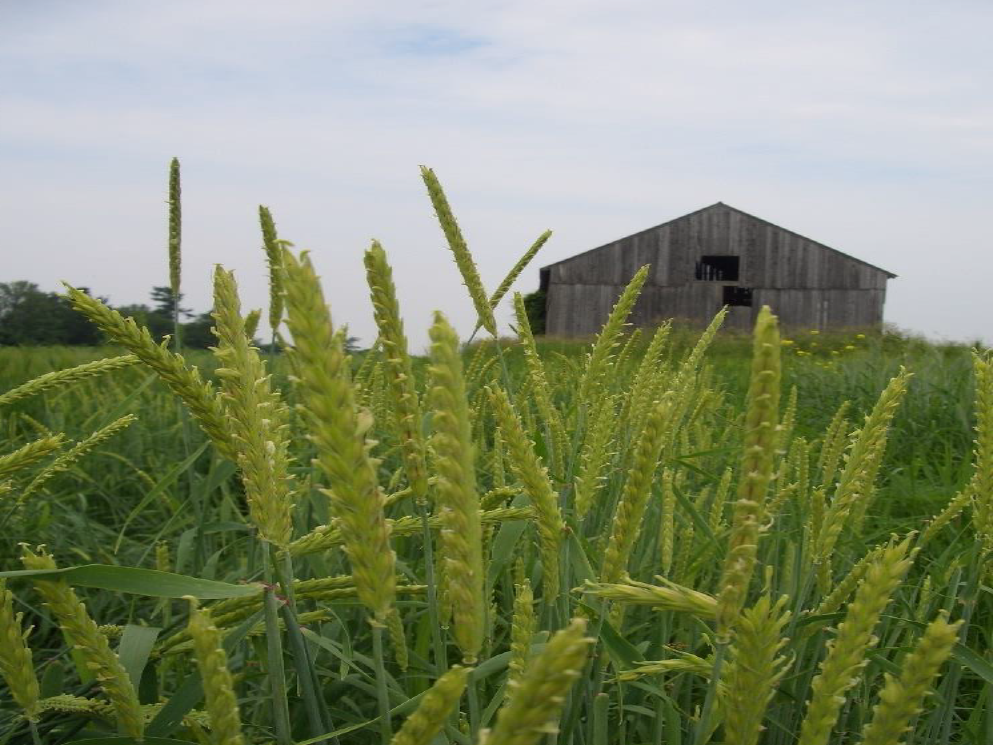While the adoption of cover crops across the northeast has exploded over the last 10 years and farmers have learned how to manage the termination of the winter cover crop, there are times when issues arise. At the start of the 2022 planting season we’ve run into some cool, unsettled weather leading to delayed plantings. The fields are also quite wet, limiting the farmer’s ability to get their cover crops sprayed out in a timely fashion.
If you spray too late in the spring (once the rye is over 18 inches high) and don’t immediately plant into it, no-tilling becomes a challenge due to dead plant material wrapping in the planter. The dead biomass will also shade the soil surface and significantly delay drying of the soil surface. If you don’t spray, the rye will get up to six feet tall and will become unmanageable without a roller crimper.
Roller crimping is the practice of rolling down the rye once it has fully matured. If done too early in the season or into a light cover crop (< 75 lbs./acre seeding rate) the rye will not snap and stay down, instead it will bounce back up and shade out the cash crop, slowing development. When roller crimping a mature cover crop (once the plant has reached anthesis), the use a roller crimper is the most practical way to plant into the standing rye. Roller crimping is part science and part art depending on how the farmer implements the practice.
There are two different types of roller crimpers – ones that mount on the tractor and ones that mount on the planter. In either case what is important is that the planter can remove enough material from the planter row to allow the planter to place the seed at the proper soil depth and still cover the seed trench. There are different types of row cleaners and closing wheels that will help facilitate the success, consistency, and completion of this process. A properly setup roller crimper/planter can make the daunting task of dealing with fields of huge cover crops much more manageable. If the farmer can wait until the cover crop is mature (which in our region is around the first week of June) the roller crimper will lay the cereal rye flat, and the planter can no-till the cash crop in with few issues. If issues arise usually there are adjustments that can be made to the planter to make the system work.
On the UVM Extension Northwest Crops and Soils Program, we utilize a Dawn Biologic planter mounted roller crimper. This machine is added to the front of the planter to flatten and crimp the cereal rye while “pulling” the rye to the middle between the rows so that the planter has less material to plant through. This system requires a steep learning curve to understand how the roller crimper on the front of the planter can change the geometry of the planting row units as the crimper “lifts” the planter as additional down pressure is applied to the crimper. There is a fine line and once it is achieved the crimper and planter work together to get the job done. When planning on roller crimping it is important to remove the large stones from fields as the operator will not be able to see them in the spring and they can damage components of the crimper and/or planter if they get hit.
This spring UVM Extension NWCS staff (Jeffrey Sanders) roller crimped several fields with very different results.
In the first video below, the farmer planted cover crop with a plan to roller crimp in the spring. Due to the long-term weather forecast and likelihood of the heavy clay soil staying wet if the crop matured and the rains kept coming (which they did) they decided to roll it early. The rye was headed out but not fully mature. You can see that the rye isn’t laying flat everywhere and over the next few days much of it “bounced” back up. The plant was still quite flexible, and the crimper could not crimp it hard enough without picking the planter up out of the ground which would compromise the cash crop.
In the second video below, we demonstrate roller crimping a fully mature standing cereal rye crop. The roller crimper is laying the rye flat on the ground and it will remain there for the summer, protecting the soil surface from the heat of the sun and pelting rains. The roller crimper is a viable option for late season management of cereal rye. It doesn’t remove the need for herbicide applications but will help suppress weeds throughout the summer and may provide a means to reduce chemical applications depending on the weed pressure history of the field.
Looking for more information on roller crimping and/or terminating cover crops? Check out the Roller Crimping Cover Crops in Vermont: Benefits and Risks fact sheet, or our Cover Crops and Reduced Tillage webpage for additional resources.














You must be logged in to post a comment.